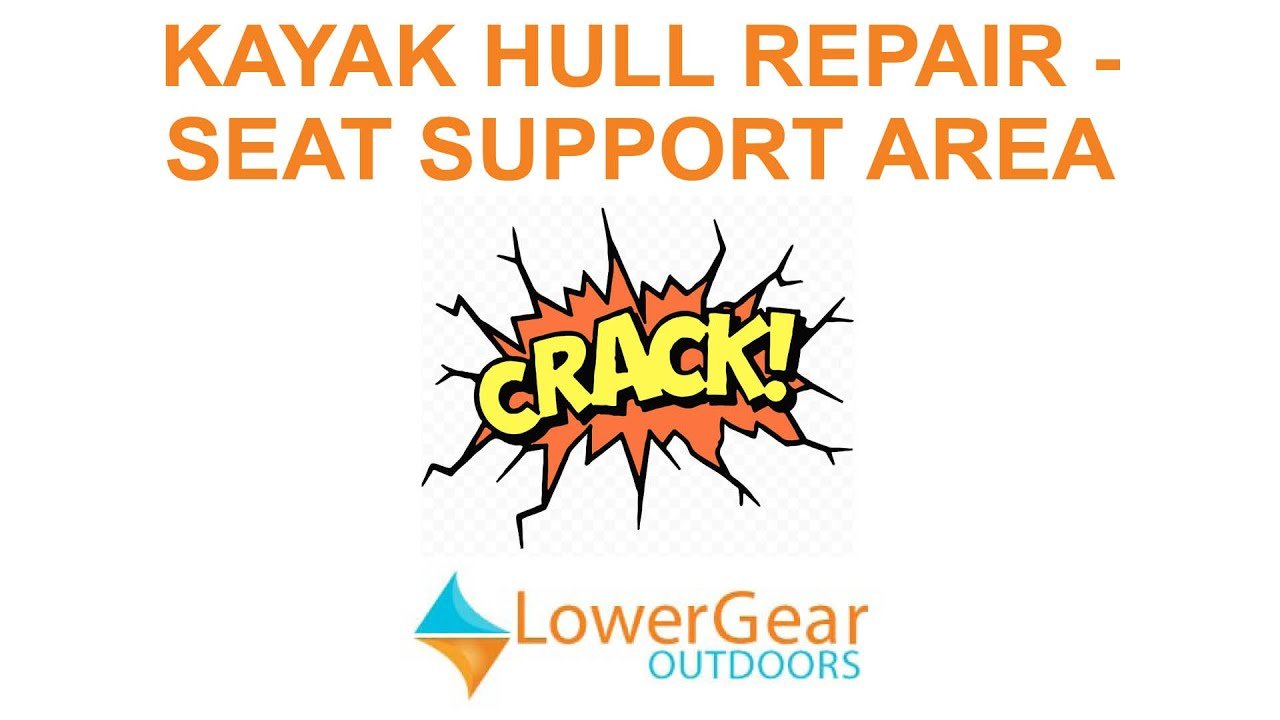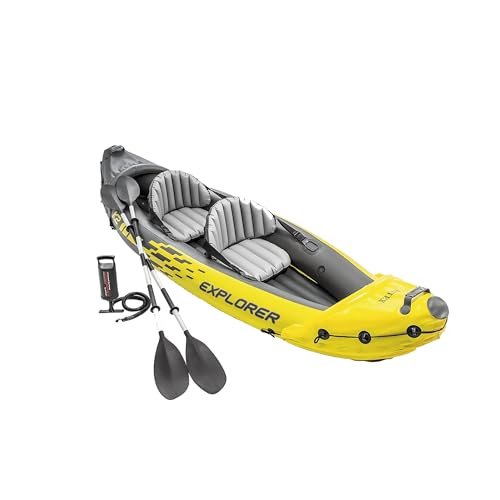Have you ever spotted a crack or scratch on the bottom of your kayak and wondered how to fix it before your next adventure? Repairing your kayak’s bottom might seem tricky, but with the right steps, you can save time and money while keeping your kayak in top shape.
In this guide, you’ll learn simple, effective ways to repair your kayak’s bottom, whether it’s a small scratch or a bigger hole. Keep reading, and soon you’ll feel confident handling these repairs yourself—getting you back on the water faster and safer.

Assessing Damage
Before fixing your kayak bottom, check the damage carefully. Understanding the problem helps you fix it right.
Look closely at the cracks and holes. Check what the kayak is made of. Decide if the damage is small or big.
Identifying Crack Types
Cracks in a kayak bottom can be different. Some cracks are small and shallow. Others are long or deep. Knowing the crack type guides your repair method.
- Hairline cracks are thin and may not leak.
- Surface cracks go through the outer layer but might not cause water entry.
- Deep cracks break through the kayak and cause leaks.
- Stress cracks look like spider webs and spread over time.
Checking Material Type
Kayaks come in many materials. The repair plan changes by material type. Common materials include plastic, fiberglass, and inflatable fabric.
| Material | Repair Tips |
| Polyethylene Plastic | Use plastic welding or strong epoxy |
| Fiberglass | Sand area and apply fiberglass resin |
| Inflatable Fabric | Patch with adhesive repair kits |
Evaluating Damage Severity
Check how bad the damage is. This helps decide if you can fix it yourself or need help. Look for holes, dents, and cracks.
Use this checklist:
- Is the crack less than 1 inch?
- Is the kayak still watertight?
- Is the damage only on the surface?
- Does the kayak leak water?
- Is there structural damage or dents?
If you answered yes to the first three, a small repair kit should work. If you answered yes to the last two, get professional help.
Gathering Repair Materials
Fixing a kayak bottom needs the right tools and supplies. Gathering all materials before starting helps the job go smoothly.
Below are key items you must have to repair your kayak safely and well.
Essential Tools
You need some basic tools to prepare the kayak and apply the patch. These tools make repairs easier and cleaner.
- Sandpaper or sanding block to smooth the damaged area
- Utility knife or scissors for cutting repair patches
- Rags or cloth to clean the surface
- Heat gun or hair dryer to help shape or cure patches
- Measuring tape to size patches accurately
Recommended Repair Kits
Repair kits come with materials matched to your kayak type. Choose the right kit to ensure strong and lasting repairs.
| Kit Type | Material | Use |
| Polyethylene Repair Kit | Polyethylene patches and adhesive | For plastic kayaks |
| Thermoplastic Repair Kit | Plastic welding rods and tools | For thermoplastic hulls |
| Fiberglass Repair Kit | Fiberglass cloth and resin | For fiberglass kayaks |
| Inflatable Kayak Repair Kit | Rubber or PVC patches and glue | For inflatable models |
Safety Gear
Wear safety gear to protect yourself during repairs. Some repair materials can irritate skin or eyes.
- Gloves to avoid skin contact with glue or resin
- Safety glasses to protect your eyes from dust and chemicals
- Mask or respirator to avoid breathing fumes
- Old clothes that can get dirty or damaged
Preparing The Kayak Bottom
Repairing the bottom of your kayak starts with good preparation. You need to make the surface ready so the repair will last long.
Cleaning, sanding, and drying are key steps before you apply any patches or resin. These steps help the materials stick better.
Cleaning The Surface
Remove all dirt, grease, and algae from the kayak bottom. Use fresh water and mild soap for cleaning.
Scrub gently with a soft brush or cloth to avoid scratching the surface. Rinse well and let it dry a little before sanding.
Sanding The Area
Use fine-grit sandpaper to roughen the repair area. This helps the patch or resin bond firmly to the kayak.
Sand around the damaged spot about 2 to 3 inches wide. Be careful not to sand too deep or damage the kayak further.
- Choose 120 to 220 grit sandpaper
- Sand evenly in a circular motion
- Wear a mask to avoid inhaling dust
Drying And Masking
Make sure the sanded area is completely dry before starting the repair. Moisture can ruin the bond of repair materials.
Use masking tape to cover edges around the repair site. This keeps the repair neat and prevents mess on the kayak.
- Wipe the area with a dry cloth
- Allow air drying for at least 30 minutes
- Apply masking tape 1 inch beyond the repair zone

Repairing Plastic Kayaks
Plastic kayaks can get damaged from rocks or rough water. Fixing the bottom helps keep the kayak safe and strong. You can repair small holes or cracks easily at home.
This guide explains how to repair plastic kayaks using simple tools and materials. It covers plastic welding, epoxy resin, and how to finish the repair.
Using Plastic Welding Techniques
Plastic welding melts the kayak’s plastic to fix cracks or holes. It creates a strong bond that holds well in water. You need a plastic welding tool or a hot air gun.
First, clean the damaged area and remove dirt. Heat the plastic welding tool and carefully melt the plastic along the crack. Add extra plastic filler if needed to fill holes.
- Wear gloves to protect your hands
- Work in a well-ventilated area
- Keep the welding tool moving to avoid burning
- Let the weld cool completely before use
Applying Epoxy Resin
Epoxy resin seals and strengthens the repaired area. It works well for small cracks and holes. Mix the resin and hardener as the instructions say.
Use a brush to apply epoxy over the damaged spot. Spread it evenly and cover beyond the crack edges. This helps prevent water from entering.
- Wear gloves to avoid skin contact
- Apply in thin layers for best results
- Use sandpaper to smooth after curing
- Check the epoxy’s cure time on the package
Curing And Finishing
Allow the repair to cure fully before using the kayak. This usually takes several hours or a day. Keep the kayak in a dry place during curing.
After curing, sand the repaired area to smooth rough edges. You can paint the kayak bottom to match the color and protect the repair from sunlight.
- Check the repair for leaks after curing
- Use fine-grit sandpaper for smoothing
- Choose UV-resistant paint for outdoor use
- Store the kayak away from direct sun to extend repair life
Fixing Fiberglass Kayaks
Repairing a fiberglass kayak bottom is a process anyone can learn. With the right materials, you can fix small damage at home.
Follow these steps to restore the kayak’s durability and performance on the water.
Mixing Fiberglass Resin
Fiberglass resin is crucial for repairing cracks or holes in your kayak. Mix the resin with a hardener to ensure it sets properly.
- Measure the resin and hardener in a 2:1 ratio.
- Stir the mixture thoroughly for a uniform consistency.
- Use immediately, as it begins to set quickly.
Laying Fiberglass Cloth
Once the resin is ready, it’s time to apply the fiberglass cloth. This strengthens the repair area significantly.
Use a brush to soak the cloth with the resin mixture. Work from the center to the edges for an even application.
Sanding And Painting
Once the resin cures, the surface may be uneven. Sanding smooths the repair and prepares it for painting.
- Start with coarse-grit sandpaper and finish with fine-grit.
- Wipe the surface clean of dust before painting.
- Apply a marine-grade paint for a weather-resistant finish.
Completing these steps will ensure your kayak is ready for water adventures again.
Sealing And Waterproofing
Repairing the bottom of your kayak ensures it stays watertight. Sealing and waterproofing are crucial steps in this process. Let’s explore the methods to keep your kayak in top condition.
These steps will guide you through applying sealant, testing for leaks, and adding final touches. Follow each step to ensure your kayak is ready for the water.
Applying Sealant
Applying sealant is the first step in repairing your kayak’s bottom. It creates a barrier that prevents water from entering.
- Clean the damaged area thoroughly.
- Dry the surface to ensure proper sealant adhesion.
- Apply an even layer of sealant using a brush or applicator.
- Allow the sealant to cure as per manufacturer’s instructions.
Testing For Leaks
Once the sealant has cured, it’s time to test for leaks. This step ensures the repair is successful.
Fill your kayak with water while it rests on a stand. Check for any drips underneath. Use a flashlight to spot any leaks easily. Mark leaking areas with a marker for additional sealing.
Final Touches
After testing, add final touches to enhance the repair. This ensures durability and a neat finish.
| Action | Purpose |
| Sand the sealed area | Smooths rough edges |
| Apply a second sealant layer | Increases waterproofing |
| Paint over the repair | Restores kayak’s appearance |
Maintenance Tips For Longevity
Taking care of your kayak bottom helps it last longer. Small repairs and regular care keep your kayak safe to use. Follow simple steps to maintain your kayak well.
This guide covers how to inspect, store, and protect your kayak bottom from damage. Each tip helps you avoid costly repairs and keeps your kayak in good shape.
Regular Inspections
Check your kayak bottom for cracks, holes, or scratches before and after each trip. Early detection stops small problems from getting worse.
- Look for any dents or gouges on the hull surface.
- Inspect the seams and joints for leaks or damage.
- Feel for soft spots that may show weakness.
- Clean the bottom to spot hidden cracks or wear.
Proper Storage
Store your kayak in a dry, shaded area to protect it from sun and moisture. Good storage prevents warping and fading of the bottom.
| Storage Tip | Reason |
| Keep kayak off the ground | Avoids moisture and dirt damage |
| Use padded racks or hooks | Prevents dents and scratches |
| Cover with a breathable tarp | Protects from sun and rain |
| Store indoors if possible | Best protection from weather |
Avoiding Common Damages
Prevent damage by handling your kayak carefully. Avoid rough surfaces and sharp objects that can harm the bottom.
- Lift the kayak instead of dragging it on rocks or sand.
- Use a kayak cart for transport over rough ground.
- Do not expose the kayak to extreme heat or cold for long times.
- Repair small holes quickly with a patch kit.

Frequently Asked Questions
How Do I Fix Cracks On A Kayak Bottom?
To fix cracks, clean the area, sand it lightly, and apply a marine-grade epoxy resin. Let it cure fully before use. This method ensures a strong, waterproof repair that restores kayak integrity.
What Materials Are Best For Kayak Bottom Repair?
Use marine epoxy, fiberglass cloth, and sandpaper for durable repairs. These materials create a waterproof seal and reinforce the kayak’s bottom, preventing leaks and further damage.
How Long Does A Kayak Bottom Repair Take?
Most repairs take 2 to 4 hours, including drying time. Full curing of epoxy may require 24 hours for optimal strength and waterproofing before kayaking.
Can I Repair A Kayak Bottom Myself Safely?
Yes, with proper materials and instructions, DIY repairs are safe. Follow step-by-step guides, wear protective gear, and ensure the repair is fully cured before use.
Conclusion
Repairing your kayak bottom keeps it safe and ready for water. Small cracks or holes need quick attention to stop leaks. Use the right materials and follow steps carefully. This saves money and extends your kayak’s life. Regular checks help catch damage early.
Enjoy your trips without worry. Keep your kayak in top shape for many adventures ahead. Simple care makes a big difference.



